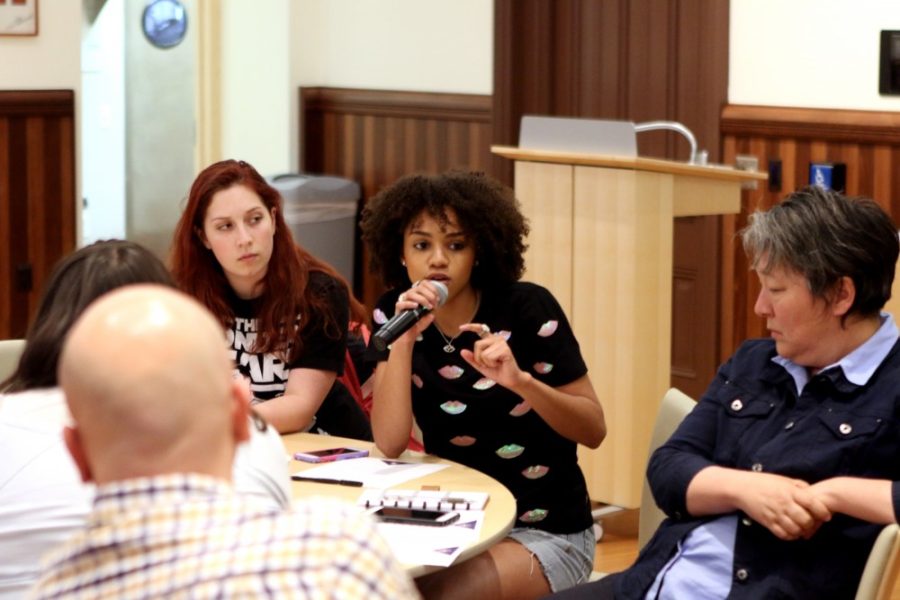Discussion at the UA’s first official diversity task force meeting Tuesday quickly revealed a deep-seated mistrust between students and administration that would take time to overcome.
While the first hour of the meeting focused on the structure of the task force, the second hour turned into a discussion between students and faculty regarding trust in the process and the people involved.
Students began expressing concern after one of the task force’s three co-chairs, Tannya Gaxiola, the assistant vice president of community relations, shared that some work was already being done by the administration to meet certain demands.
READ: Protest for marginalized students a ‘PR event’ to raise awareness of demands
“[The orientation team] heard loud and clear that one of the things that’s really important is that from the first interaction that our students have on campus, they need to start hearing from us that diversity and inclusion is a value here at the [UA],” Gaxiola said.
The orientation team is already implementing changes for the upcoming new student orientations, so incoming students will be “hearing things differently than they have heard previously,” Gaxiola said.
Student representatives expressed concern that they had not been involved in the implementation of these changes and shared that since they had not gone over their demands with faculty, they did not trust that those demands were interpreted correctly.
“When we’re left out of those conversations, we think, ‘well, there’s no standard of competency, like what perspective are they coming from?’” said Trinity Goss, co-president of the Black Student Union.
Multiple student concerns prompted Jen Hoefle-Olson, program director for LGBTQ Affairs, to ask the student representatives present what it would take to earn their trust.
Hoefle-Olson’s question was the turning point in a discussion that had begun to result in visible frustration for both students and faculty, allowing students to share the sources of their mistrust.
“I’d personally like to see some of the faculty and staff and the senior vice presidency committee actually set foot in our centers and talk to the students,” said Monica Contreras, a senior intern at Chicano/Hispanic Student Affairs. “You know, stop by, have lunch with us, because a lot of this stuff is going on through a hierarchy and an ivory tower and we feel as students our voices aren’t being heard.”
Contreras’ feelings were echoed by other students who wanted to see faculty and staff reach out and attend events.
Collectively, the task force decided upon eight subcommittees with which to tackle different issues. The subcommittees are: Classroom Experience, Financial Aid and Admissions, Health and Wellness, Faculty and Staff Diversity, Cultural Competency Training, Spaces and Facilities, Student Experiences, and Student Support.
READ: Hart forms team to support diversity
Each subcommittee is based on issues brought forth by students during both the faculty senate meeting and President Ann Weaver Hart’s listening tours, and the Marginalized Students of the University of Arizona’s list of demands.
Each member of the task force was encouraged to sign up for one or more of the subcommittees, which will decide on their respective meeting times. The diversity task force will meet once a month.
It is the subcommittees’ job to focus on particular kinds of demands and develop feasible solutions, which can then be presented to the diversity task force as a whole. The task force co-chairs will present and advocate for agreed upon solutions to the university’s senior vice presidents.
Task force co-chair Gaxiola said she understood the students’ emotions in the meeting.
“I thought today’s meeting was really great,” Gaxiola said. “There is a lot of passion about these issues and we need to hear that—we want to hear that.”
Follow Michelle Jaquette on Twitter.









